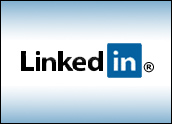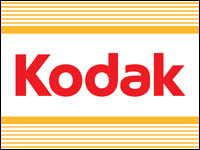
Sometimes you can’t win for winning. LinkedIn’s stock price fell more than 10 percent Friday morning.
On Thursday, LinkedIn reported higher-than-expect third-quarter revenue of US$139.5 million, more than doubling last year’s revenue of $61.8 million. The company also beat analyst expectations of $128 million for the quarter.
LinkedIn reported losses of 2 cents per share. This, too, was better than expected; analysts had forecast a 4-cents-per-share loss. Non-GAAP earnings per share were 6 cents, beating estimates of 1 cent. Adjusted EBITDA for the quarter was $24.7 million, considerably higher than the company’s projected $12.5-$13.6 million.
Even before its IPO earlier this year, LinkedIn made it clear the company would experience short-term losses. Even so, investors seemed nervous about the company’s earnings report.
As for the guidance, LinkedIn increased its overall 2011 revenue expectation to the $508-$512 million range, higher than the August guidance of $475-$485 million. For the fourth quarter, the company projected $154-$158 million with EBITDA of $19 to $21 million.
$100 Million More
Also on Thursday, LinkedIn announced its filing of a registration statement with the U.S. Securities and Exchange Commission for a proposed public offering of shares of its Class A common stock. The company is proposing to sell approximately $100 million of its shares as well as any shares issued to underwriters to cover over allotments. The remaining shares will be sold by existing stockholders.
The announced purpose of the cash raised will be to provide additional working capital for further expansion of product development and field sales organizations. The company also wants to invest in capital expenditures and strategic acquisitions or investments.
LinkedIn did not respond to the E-Commerce Times’ request for comments by press time.
Growth Means Losses
Losses are common for high-growth companies. They have to invest in infrastructure and personnel to support an expanding customer base.
“For public companies, a high-growth model can turn into a disaster because it results in point losses as the company builds out rapidly against its aggressive goal,” Rob Enderle, principal analyst at the Enderle Group, told the E-Commerce Times.
“LinkedIn has an aggressive multiple that is around three times Google’s,” he explained. That makes it about three times more volatile. That makes investors nervous. A loss with any company, particularly a .com style company, will make investors nervous.”
LinkedIn is operating as though it were a privately held company, Enderle observed, and apparently not taking into account the risks of its actions.
“Overall, the operating numbers look really good,” he said. The problem is, “they are investing at a rate that the investors aren’t ready to accept, and so their stock is taking a beating.”
Vulnerable to Social Network Giants
Any company in the social networking space has to maintain customer and user loyalty, Enderle pointed out.
“LinkedIn’s numbers suggest they are doing this better than the bellwether Facebook and certainly better than Google +,” he said.
Loyalty may be key to LinkedIn’s future in the highly competitive world of social networking. There is always the opportunity for a super-services company to swoop in and simplify things for users — overshadowing LinkedIn just like Facebook did MySpace.
“LinkedIn, so far, remains largely untouched by Facebook and Google +,” said Enderle. They are not direct threats to LinkedIn because they are more focused on each other for now. However, it’s too early to tell how this will play out in the long run.
Keeping a Steady Course
Despite the queasiness of its investors, LinkedIn may be moving steadily in a solid direction.
“Frankly, they performed better in the third quarter than I expected,” Steven Savage, technology project manager and Geek 2.0 blogger, told the E-Commerce Times. “I think this earnings report is good news for the company overall.”
The stock dive came as a surprise to Savage.
“I’m wondering if it’s because people expected spectacular — and unrealistic — growth,” he speculated.
LinkedIn’s focused business model is a plus, said Savage, but making new additions to the company’s service offerings would be a mistake.
“They seem to have a decent vision overall, but I think they could expand some of their services — more training and helping HR people with hiring,” he said.
Overall, the company is playing it appropriately safe, in Savage’s view. “They’re nicheing, which is a good idea, though that may not mean spectacular — or even sustainable — growth.”
The tough economy makes things even less predictable, he concluded.





















































Social Media
See all Social Media